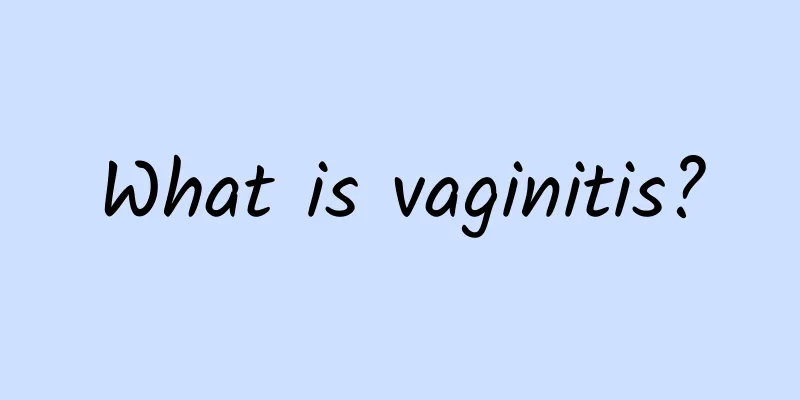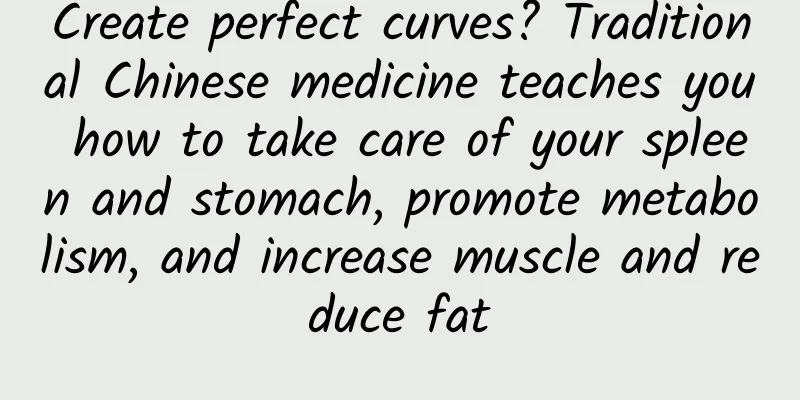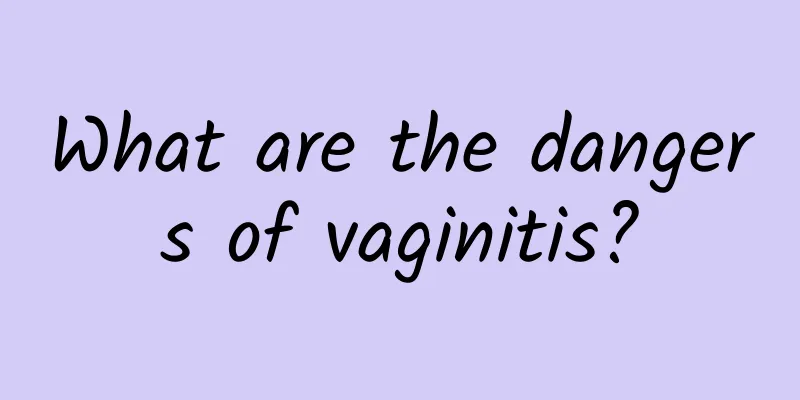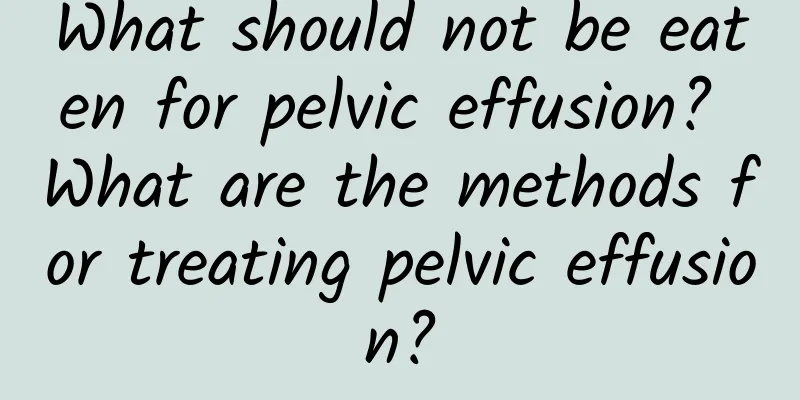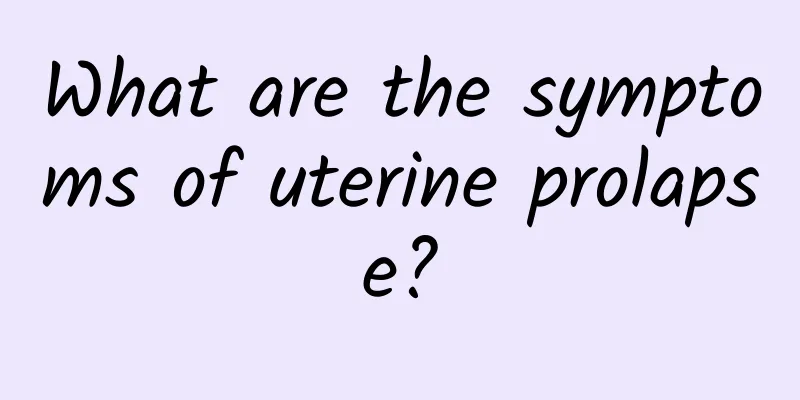When must uterine fibroid surgery be performed? What are the dietary points for uterine fibroids?
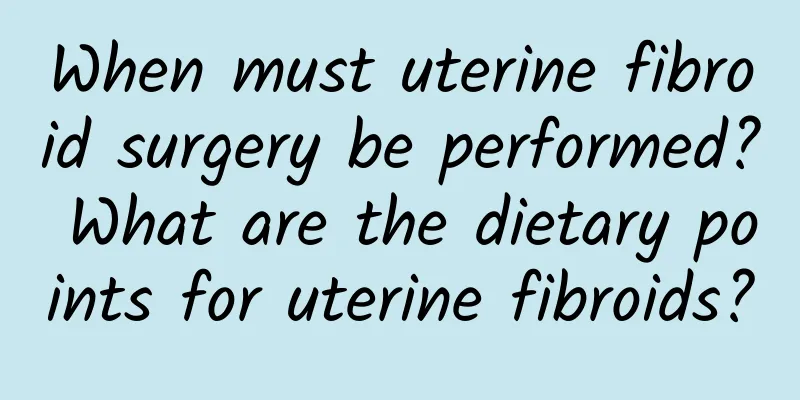
|
What are the surgical indications for uterine fibroids? It is necessary for everyone to understand this point. Only by understanding the surgical indications for uterine fibroids can we help everyone better apply this surgery. What are the indications for surgery for uterine fibroids in women? 1. Fibroids fill the pelvic cavity, and the uterus is 3 months pregnant 2. Patients with excessive blood and poor treatment, severe anemia, compression symptoms such as difficulty urinating and defecating, low-lying fibroids or cervical fibroids or broad ligament fibroids, which compress the ureter and cause ureteral and renal pelvic edema. 3. Patients with submucosal uterine fibroids, prolapse and cervical infection. 4. Subserous pedicled myoma, torsion. 5. The fibroids are increasing rapidly and are suspected to be malignant. What is the post-myomectomy maintenance? We need to master this. Only by mastering the maintenance after hysterectomy can we help you actively recover your health. So how to do maintenance after hysterectomy? The following are the specific suggestions of experts. First, determine the nature of the patient's surgery. Is it a hysterectomy or a total hysterectomy. Generally speaking, patients with uterine fibroids come to menopause, and even the uterus and uterus are completely removed. If it is the former, myomectomy is no different from cesarean section. The wound is small, bleeding is less, and it is relatively easy to recover. If it is the latter, it belongs to myomectomy and organectomy, and the relative wound and bleeding are greater than the former. The general recovery period is between 1-2 months and the method is similar to the delivery method. Many patients should be mothers. As long as you are not cold or tired, rest quietly. In addition, the surgical incision for uterine fibroids is very special. Please note that there is a 3-inch horizontal incision below the belly button, not a vertical incision. So it is easier to recover than other operations. One or two days after the operation, especially that night, are very difficult to endure. Family members should pay more attention. In addition, according to personal circumstances, if the uterus is retained and the patient has not yet reached menopause, medication should be continued for half a year to control the arrival of menstruation. Patients generally experience general weakness or back pain after surgery, but as long as they are trained quietly, the problem is not serious. When people are sick, family care is the most important. Therefore, postoperative maintenance after hysteromyomectomy must be actively mastered. Only by ensuring postoperative maintenance after hysteromyomectomy can we ensure a smooth recovery from surgery and avoid greater damage caused by the disease. Dietary tips for uterine fibroids Surgical treatment of uterine fibroids is currently common in clinical practice, but with the emergence of many emergencies, it is easy to cause many problems for people's recovery treatment, so we pay great attention to daily care. Let's analyze and introduce it in detail from the diet. 1. Eating time after uterine fibroid surgery Patients should not eat too early after surgery. Six hours after surgery, patients should eat nutritious and easily digestible food. Generally speaking, after anal gas is discharged, patients can start drinking a small amount of water. If there is no discomfort, they can eat liquid food such as rice soup and vegetable soup, and then gradually transition to soft food and ordinary food. 2. The diet after uterine fibroid surgery should not be too refined People's daily diet is mainly high-protein and high-calorie foods. But after surgery, the body's repair requires a variety of nutrients, and too good food is not conducive to nutrient intake. So you should eat more crude fiber foods. Crude fiber foods can enhance gastrointestinal activity and keep bowel movements smooth. 3. Nutritional supplementation after uterine fibroid surgery Patients need to supplement nutrition after surgery. For example, due to the need for wound healing, patients with uterine fibroids should eat more high-protein foods after surgery to accelerate wound healing. For elderly and frail patients, they can eat more lean meat or fresh fish soup and other liquid and semi-liquid foods, which are not only conducive to digestion and appetite, but also can ensure nutritional intake and help patients recover. If the patient is malnourished, you can consider taking some oral high-energy comprehensive nutritional preparations. Generally speaking, patients with uterine fibroids should eat more lean meat, chicken, crucian carp, turtle, white fish, cabbage, winter melon, mushrooms, tofu and other foods after surgery. 4. Avoid eating after uterine fibroid surgery Patients with uterine fibroids generally avoid eating spicy foods or drinks such as peppers, white wine, and garlic, and also avoid eating foods such as longan and red dates that are hot, blood-clotting, and contain hormones. However, due to the different surgeries used by patients with uterine fibroids, there are still some differences in some aspects. For example, foods such as sweet potatoes and onions should not be produced after laparoscopic surgery to reduce the discomfort caused by postoperative abdominal distension. Larger surgeries such as hysterectomy are more suitable for eating after 24 hours. 5. Avoid overeating after uterine fibroid surgery Overeating will cause fat accumulation, which is a burden on the body after surgery. Of course, insufficient eating is not conducive to the body's recovery. Therefore, you must pay attention to proper diet after surgery. Surgery for patients with uterine fibroids is very necessary, and care is very important. Only by fully understanding the above strict dietary requirements can we better cope with it and lay a good foundation for the rapid recovery of the patient's body. Therefore, it is necessary to master these contents. |
>>: What are the surgical treatments for uterine fibroids? The main treatments for uterine fibroids
Recommend
What should you pay attention to after artificial abortion? You must pay attention to these
Pregnancy is sometimes something that people look...
What is the cause of ovarian cysts?
What is the cause of ovarian cysts? What causes o...
What causes ectopic pregnancy?
Ectopic pregnancy is a problem faced by many fema...
Ectopic pregnancy may be caused by maldevelopment of the fallopian tube
Ectopic pregnancy may be caused by dysplasia of t...
Still queuing up to buy mooncakes? Homemade high-fiber, low-oil sweet potato and taro snow skin mooncakes, healthy and worry-free
Are you still queuing up to buy mooncakes? The mo...
Chang Gung Yongqing Cup Road Race starts on October 7th GO
To live, you must move. To be healthy, you must m...
The auntie turns into a hot Taiwanese girl! She injected botulinum toxin into her stomach and lost 24 kilograms in half a year
Being obese and having too much body fat can caus...
Supplement amino acids before going to bed to consume calories and feel refreshed
Can you lose weight while sleeping? Modern people...
What to do if you bleed again after menopause
Postmenopausal bleeding refers to abnormal vagina...
Treatment of vulvar white spots: three major misunderstandings
Vulvar leukoplakia, also known as leukoplakia vul...
Symptoms of chorionic carcinoma after abortion
Symptoms of choriocarcinoma after abortion may in...
What happened to the palace?
Uterine prolapse may sound strange, but it is act...
Slim arms and reduce accessory breasts! Come do 10 minutes of sculpture exercise
Doctor Lu said: Although we often use our hands t...
Papaya helps with weight loss, can papaya seeds prevent cancer? Is papaya really good for breast enlargement? Must-read article
Papaya, once rated as the most nutritious fruit b...
Is cervical hypertrophy harmful to middle-aged women?
If cervical hypertrophy in middle-aged women is n...
